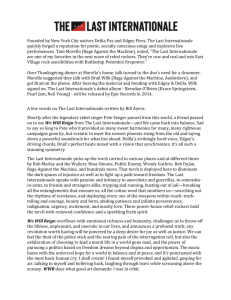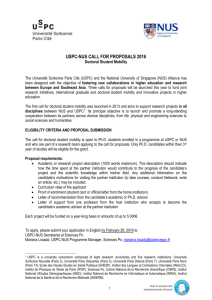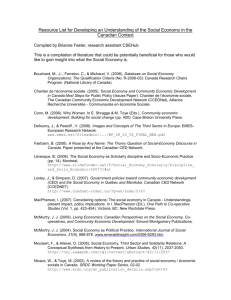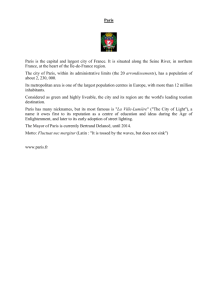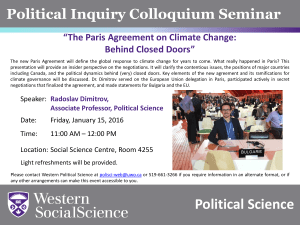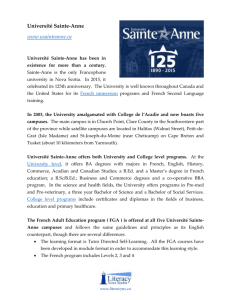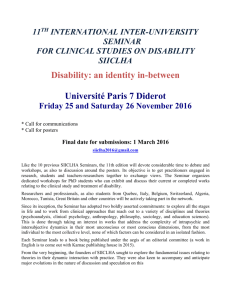simulation models - Universidad Autónoma de Madrid
advertisement
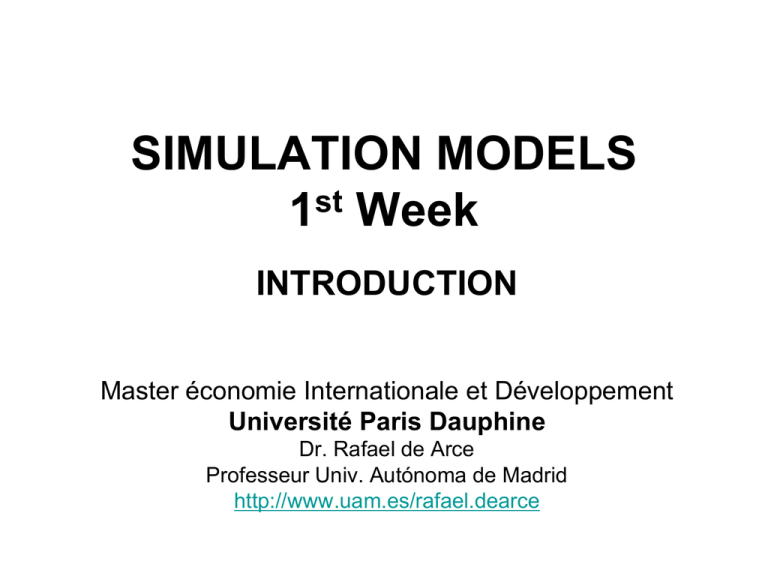
SIMULATION MODELS st 1 Week INTRODUCTION Master économie Internationale et Développement Université Paris Dauphine Dr. Rafael de Arce Professeur Univ. Autónoma de Madrid http://www.uam.es/rafael.dearce WHY DO POLICY-MAKERS NEED MODELS? Reference paper: Piermartini, R. and Teh, R. (2005): “Demystifying Modelling Methods for Trade Policy”. WTO Discussion Papers, num. 10. September, 2005. • Economic models provide a theoretically consistent, rigorous and quantitative way of evaluating different policy analysis. • Multiple options, multiple actors. • A simulation of the model can confirm that judgment and provide estimate of the likely gains • Models can alert about effects in inter-related issues • But, what’s first? “The tail shouldn’t wag the dog” Master économie Internationale et Développement, Université Paris Dauphine WHY DO POLICY-MAKERS NEED MODELS? WHY DO POLICY-MAKERS NEED MODELS? EXPONENTIAL GROWTH Largeness and wideness Statistical collection (“Big data and Macro/Micro data availability) Increase of Computational power Advances in theoretical analysis Master économie Internationale et Développement, Université Paris Dauphine Moore Law “Sylicone chip procesor doubles its capacity in 18 months....” STRENGTHS Reflects Inter-dependency of economic variables Computer based models allow us to track all of these interactions Simulation of several scenarios is available Simulations are performed in a transparent hypothesis frame They discipline thinking about how economies actually work Master économie Internationale et Développement, Université Paris Dauphine LIMITATIONS Aggregations can obscure important underlying relationships Data are not always “high quality” All the quantitative models are subject to error Responsiveness of supply and demand to price changes are not necessarily accurate Choices among scenarios and model specification can imply very different results Technical comprehension is only available for experts Master économie Internationale et Développement, Université Paris Dauphine CHOICE THE MODEL COMPARATIVE STATIC AND DYNAMIC ANALYSIS • Static: changes in policies and direct transmission to endogenous variables of model • Dynamic: final and intermediate process of change PARTIAL OR GENERAL EQUILIBRIUM ANALYSES • “Ceteris Paribus” criteria • Whole economy linkages Master économie Internationale et Développement, Université Paris Dauphine Whole economy linkages Reference paper: Piermartini, R. and Teh, R. (2005): “Demystifying Modelling Methods for Trade Policy”. WTO Discussion Papers, num. 10. September, 2005. KIND OF THECNICAL STRATEGIES FREQUENTLY USED IN INTERNATIONAL SIMULATIONS • • • • • • Traditional Econometric Multiequational Models Optimization Models Gravity Models Panel Data Models Leontief Based Models (I-O Models) Social Account Matrix Models Master économie Internationale et Développement, Université Paris Dauphine Exogenous Endogenous Relationship • Optimization: – One target function – Constraints to be accomplished – Linear and non linear available linkages – Sometimes, more than one solution (local optimum) Master économie Internationale et Développement, Université Paris Dauphine Exogenous Endogenous Relationship • Gravity Models: Gij Mi mj d ij2 Example: Gravity Panel Data Model used in Arce and Mahia (2008): “ DETERMINANTS OF BILATERAL IMMIGRATION FLOWS BETWEEN THE EUROPEAN UNION AND SOME MEDITERRANEAN PARTNER COUNTRIES: ALGERIA, EGYPT, MOROCCO, TUNISIA AND TURKEY”. FEMISE 2008: log( INMIG it ) i 2 log( GPULLit / GPUSHit ) 3 log( EMPHOS it ) 4 log( POTMIG it ) 5 log( GINHOS it / GINORI it ) 6 log( DISTAN i ) 7 log( INMIG it 1 ) 8 LANGi U it Master économie Internationale et Développement, Université Paris Dauphine Exogenous Endogenous Relationship: Leontief Based Models (I-O Models) and Computable General Equilibrium (CGM): – Actors – – – – – – – – Activities Commodities Factors Enterprises Households Government Capital Account Rest of the World – Behavioral parameters – Elasticity of producers and consumers to price changes – Value Added – Armington – Demand/income Master économie Internationale et Développement, Université Paris Dauphine SAM Structure “The most important thing between the screen and the keyboard is the person who is in the middle of them.”

